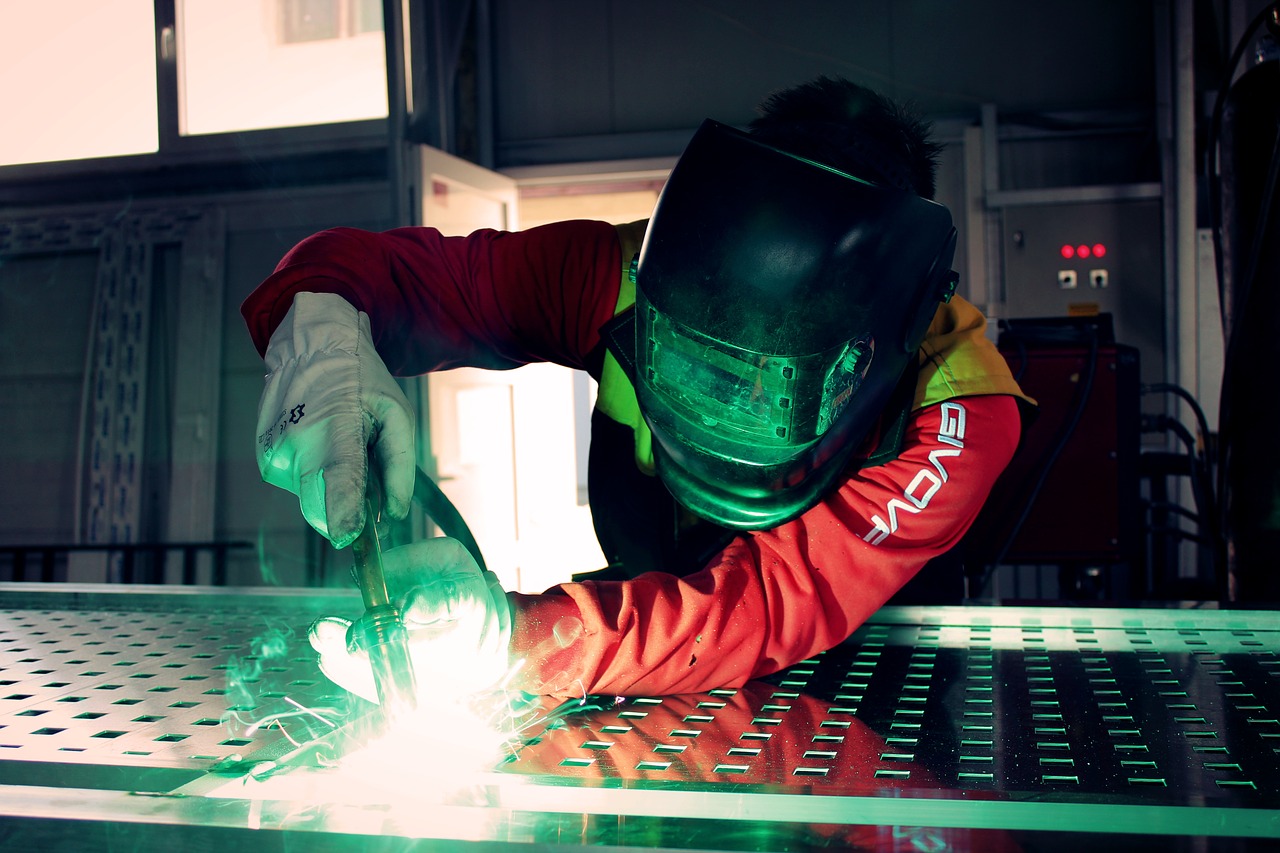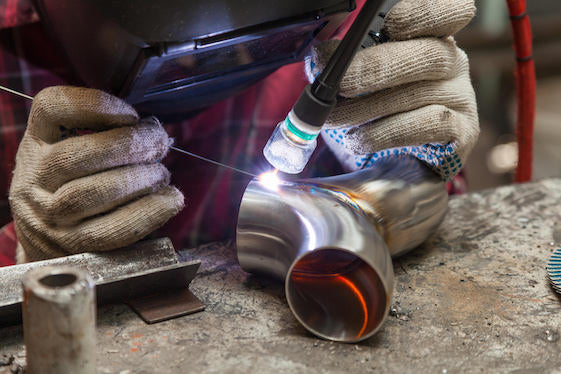Typical Welding Repair Issues and Exactly How to Address Them Properly
Welding repair services commonly come across a variety of issues that can jeopardize the stability of the end product. Typical issues include poor infiltration, porosity, and imbalance, among others. Each flaw provides one-of-a-kind challenges that need details techniques for resolution. Understanding these problems is essential for welders intending to boost their results and abilities. This conversation will certainly explore these usual welding repair service issues and effective techniques to resolve them.
Inadequate Penetration
Poor infiltration occurs when the weld steel fails to totally fuse with the base material, causing weak joints and potential structural failings. This issue often originates from insufficient warm input, incorrect electrode angle, or improper welding speed. Welders may experience inadequate penetration because of a mistake of the necessary parameters for a specific material thickness or kind. In addition, contamination on the base product's surface can impede effective bonding, intensifying the problem. To resolve poor infiltration, welders need to ensure proper setups on their devices and preserve a tidy job surface area. Regular evaluation of welds is suggested to identify any kind of deficiencies early, enabling for timely adjustments and the avoidance of jeopardized structural stability in bonded settings up.
Porosity
Porosity is an usual problem in welded joints that materializes as little gas bubbles trapped within the weld metal. This flaw can compromise the honesty of the weld, resulting in lowered toughness and potential failure under tension. Fabrication. Porosity usually occurs from contamination, wetness, or incorrect welding techniques, which enable gases to get away into the molten weld pool. To deal with porosity, welders ought to ensure appropriate surface area preparation, keep a clean working atmosphere, and use ideal welding specifications. Additionally, choosing the right filler product and securing gas can minimize gas entrapment. Normal inspection and screening of welds can aid recognize porosity early, guaranteeing timely rehabilitative activities are taken, thus protecting the quality and reliability of the welded framework
Misalignment
Misalignment in welding can emerge from different factors, consisting of inappropriate setup and thermal development. Comprehending the source is crucial for reliable resolution. Several adjustment methods are offered to straighten components and guarantee architectural stability.
Sources of Imbalance
Welding misalignment often originates from a selection of underlying problems that can compromise architectural stability. One primary reason is incorrect fit-up of parts prior to welding, which can result in gaps and irregular surfaces. Variants in thermal development throughout the welding procedure can likewise cause distortion, particularly if the materials being signed up with have various coefficients of growth. Furthermore, poor securing and fixturing might fail to hold elements securely in area, resulting in activity during welding. Poorly maintained devices, including welding machines and devices, might introduce inconsistencies in the weld grain, additional contributing to imbalance. Ultimately, driver mistake, coming from insufficient training or experience, can also play a considerable duty in creating misaligned welds.
Correction Techniques Available
Dealing with imbalance properly calls for a combination of restorative methods customized to the specific concerns available. One usual technique is using jigs or components to hold elements in the correct position during welding, making sure regular alignment. Additionally, pre-heating the materials can help lower distortion and improve fit-up. For substantial misalignment, mechanical realignment strategies, such as using hydraulic jacks or clamps, can be utilized to fix the setting prior to welding. Post-weld warmth therapy might likewise be needed to alleviate stresses created by imbalance. Cautious examination and change during the arrangement phase can avoid imbalance issues from becoming considerable problems, advertising a smoother welding procedure and boosting overall architectural honesty.
Distortion
Distortion is a typical challenge in welding that can arise from different elements, consisting of unequal heating & cooling. Comprehending the sources of distortion is vital for applying reliable avoidance strategies. Resolving this concern not only improves architectural stability but additionally boosts the total quality of the weld.
Reasons of Distortion
When based on the extreme heat of welding, products typically undergo modifications that can cause distortion. This phenomenon mostly emerges from thermal growth and tightening during the welding procedure. As the weld location warms up, the product increases; upon cooling, it contracts, which can develop internal stresses. Furthermore, irregular home heating throughout a work surface can exacerbate these stresses, causing warping or bending. The kind of product also plays a substantial duty; steels with differing thermal conductivity and coefficients of expansion may react in a different way, leading to unforeseeable distortions. Poor joint style and inadequate check my site fixturing can add to imbalance throughout welding, increasing the likelihood of distortion. Understanding these reasons is crucial for efficient welding fixing and avoidance learn this here now techniques.
Prevention Techniques
Efficient prevention strategies for distortion during welding focus on controlling warm input and making certain proper joint layout. Keeping a consistent heat input helps to decrease thermal growth and contraction, which can result in distortion. Making use of strategies such as preheating the work surface can also decrease the temperature gradient, advertising consistent home heating. Additionally, selecting suitable joint designs, such as T-joints or lap joints, can boost security and decrease anxiety concentrations. Implementing correct fixturing to safeguard the work surfaces in place further aids in maintaining alignment during the welding procedure. Finally, staggered welding sequences can distribute heat much more equally, preventing localized distortion. By using these techniques, welders can greatly decrease the likelihood of distortion and improve the total quality of their welds.
Cracking
Fracturing is an usual issue run into in welding repair work, usually resulting from different elements such as inappropriate cooling prices, product selection, or insufficient joint prep work. The event of splits can substantially compromise the integrity of the weld, resulting in potential failings during operation. To resolve this issue, welders have to initially assess the source, making sure that products are compatible and suitably picked for the details application. In addition, managing the air conditioning price during the welding process is vital; rapid air conditioning can induce stress and anxiety and cause fracturing. Correct joint style and prep work also contribute to lessening the threat. Implementing these methods can enhance weld high quality and durability, inevitably decreasing the likelihood find out here of fracturing in finished weldments.

Incomplete Fusion
A substantial issue in welding repair services is incomplete fusion, which happens when the weld metal does not sufficiently bond with the base product or previous weld passes - Welding. This problem can bring about weaknesses in the joint, potentially compromising the stability of the bonded structure. Aspects contributing to incomplete fusion include not enough warmth input, improper welding strategy, and contamination of the surface areas being signed up with. To resolve this problem efficiently, welders ought to ensure proper pre-weld cleaning and surface area preparation, in addition to change their welding criteria to accomplish adequate penetration and blend. Regular inspection throughout the welding process can also assist identify insufficient blend early, enabling for timely rehabilitative procedures to boost the total top quality of the weld
Overheating
While welding repair work can improve structural honesty, overheating presents a substantial obstacle that can lead to product degradation. Extreme heat during welding can alter the mechanical homes of steels, causing lowered strength, enhanced brittleness, and warping. This phenomenon is specifically important in high-stress applications where architectural reliability is extremely important. Determining overheating can entail visual examinations for discoloration or distortion, as well as keeping track of temperature throughout the welding procedure. To mitigate the dangers connected with getting too hot, welders should use appropriate techniques, such as regulating warm input, readjusting travel speed, and utilizing appropriate filler materials. Furthermore, implementing pre- and post-weld heat treatments can help recover product homes and enhance the total quality of the fixing, ensuring long-term performance and safety and security.
Often Asked Questions
What Are the Common Signs of a Welding Problem?

Exactly How Can I Check My Welds for Top quality?
To test welds for top quality, one can utilize visual examinations, ultrasonic testing, and radiographic approaches. Each technique ensures architectural honesty, identifies flaws, and validates adherence to defined criteria, ultimately enhancing the reliability of the bonded joints.
What Safety Precautions Should I Take While Welding?
When welding, one ought to prioritize safety by wearing suitable personal protective tools, making certain correct air flow, protecting flammable materials away, preserving a clean office, and being mindful of environments to stop accidents and injuries.
Can I Repair a Weld Without Remodeling the Entire Joint?
Fixing a weld without redesigning the entire joint is feasible, relying on the damage (Belgrade Welding). Methods such as grinding, adding filler material, or utilizing a welding procedure can effectively resolve details defects while preserving the surrounding structure
What Devices Are Essential for Reliable Welding Repair Works?
Important devices for efficient welding fixings include a welding machine, cable brush, grinder, safety gear, clamps, and filler materials. Each device plays a crucial role in making certain quality and safety during the repair process. Porosity commonly occurs from contamination, wetness, or inappropriate welding techniques, which enable gases to leave into the liquified weld swimming pool. Improperly kept equipment, consisting of welding equipments and tools, may introduce incongruities in the weld bead, more adding to imbalance. When subjected to the extreme warmth of welding, materials usually undertake changes that can lead to distortion. Fracturing is a common issue experienced in welding repair work, often resulting from different aspects such as incorrect air conditioning rates, material choice, or inadequate joint prep work. A considerable problem in welding repair services is incomplete blend, which takes place when the weld metal does not adequately bond with the base product or previous weld passes.
Comments on “Why welds crack and how Montana Mobile Welding and Repair avoids them”